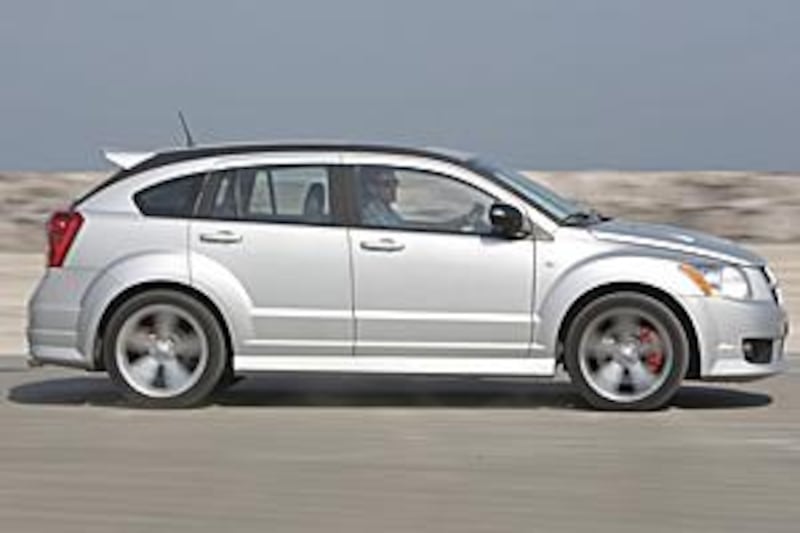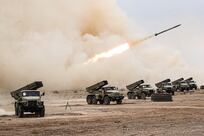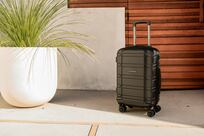When the Burj Dubai is finished, it will be around 800 metres tall, the tallest structure in the world. Wait a minute, it's still got about a year left of construction, and already it's the tallest building standing! Wow. It will be filled with expensive hotels that I'll probably never stay at, restaurants that I won't have enough credit on my cards to eat at, and residences that I certainly won't ever be able to afford to live in. But, it's beautiful, isn't it? Unless, of course, you think it looks like an evil entity from a medieval, Lord of the Rings-style film, like a friend of mine ponders. Go ahead, take another look at it and tell me you don't see that.
But how do you build such loftiness? You start with a good foundation. The building rests on a slab of concrete that measures 7,432 square metres, held to the ground with 50m-deep pilings anchored into the earth. That baby isn't going anywhere, because the engineers know that a good building needs a good foundation. It's the same with cars. You start with a good foundation, or chassis, and you get a well-performing vehicle.
When Chrysler wanted a car for the hot hatchback market in 2006, it turned to its performance division, Street and Racing Technology (SRT). What it gave them as a foundation was the Dodge Caliber, its tall, boxy, four-door hatchback with its ubiquitous crosshairs grille and a four-cylinder engine, and what SRT came up with was the Caliber SRT-4. There aren't many areas the SRT people didn't touch when tuning up the Caliber. The body was lowered and 19-inch wheels were fitted with low-profile tyres, giving the car a more muscular stance that, consequentially, helped the handling. The new bonnet with functional scoop and fake air inlets adds to the macho look, too; throw in the big wheel flares, and this car definitely looks powerful. Some may not like the chiselled lines, but I don't mind them.
Inside, the dash is a wide expanse of black plastic, broken up by a swath of fake aluminium on the centre stack. Its saving grace is that its a clean design and the diamond-edge texture on the hard plastic helps break up the blandness of it all. An SRT addition is the small turbo boost gauge to the left of the driver; not a necessity by any means, but it does add to the sportiness, I guess. But the radio was impressive for the price point of the car, and the addition of the sunroof in no way restricted the headroom. The front and back are also roomy enough, elbow-wise, and the rear seats go down for added room and practicality - though they don't fold completely flat, something all seats in cars like this really should do.
But the seats themselves, particularly the front seats, are fantastic. Part leather, part durable, textured fabric, they are not just very comfortable, but the side bolsters seem ripped from a WRC car and, as such, they should keep a driver or passenger in place during all manner of ridiculous cornering. I wasn't just sitting in the car; I was ensconsced in it. Ah, but interiors and exteriors are not just what the SRT guys do. Under the bonnet, replacing the Caliber's base 148-horsepower engine is a very capable 285-horsepower, 16-valve, turbocharged four cylinder. For a car this size, 285 hp will rocket it from 0-to-100 kilometres per hour in about six seconds. The downside of this clout is two-fold - the engine has to be revved high to milk everything out of it (full power comes at 6,000 rpm) and, when the potential is delivered, it wrenches the steering wheel from your grasp with prodigious amounts of torque steer.
The engineers also stiffened up the suspension on the SRT-4 - very much. While this does help with the handling, it makes the ride a bit harsher, especially going over storm grates or other annoyances on the road. And, be forewarned - take those speed bumps at slow, slow speeds! While the handling is definitely improved over the base Caliber, tight, higher-speed corners coax out tyre squeal and understeer earlier than you'd like.
For performance driving, which is what this car is supposed to be designed for, I have three big bugaboos: one is the gearbox. It's a six-speed manual, which sounds like a great idea, but its stiff and clunky and precludes quick rows through the gears. The second fault is the wide distance between the brake and the accelerator, which prohibits easy blipping of the throttle when downshifting, and third are the steering wheel spokes. They are too high for the proper three- and nine-o'clock hand positions, and when you do bring your hands down slightly, the spokes are so wide behind the wheel that you can't get a good grip. And believe me, with the torque steer, you need a good grip.
The Caliber SRT-4 isn't a bad car at all, especially for the price. The engine offers great power, it's comfortable and roomy enough, and its handling is spirited enough for fun, about-town rallying. But, you'll notice I'm using the word "enough" quite often. For this vehicle's brief of a hot hatch, it comes up just a little short, especially against competition such as the Volkswagen GTI, the Subaru WRX and the Mazdaspeed 3. But you can't blame the SRT engineers; the foundation they were given simply isn't up to the challenge. In fact, they did a great job extracting all the performance they could from this chassis, but, let's face it, the tall Caliber didn't have a good reputation for handling to begin with.
With such a shaky foundation, let's just be thankful the Caliber SRT-4 isn't as tall as the Burj Dubai. nvorano@thenational.ae






